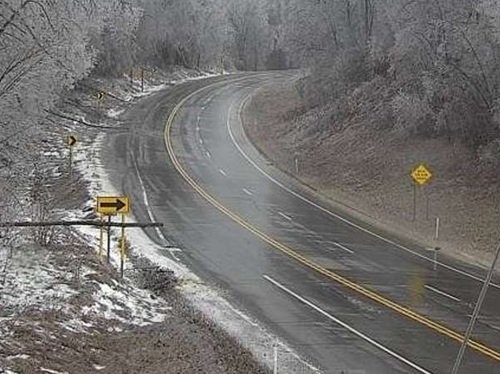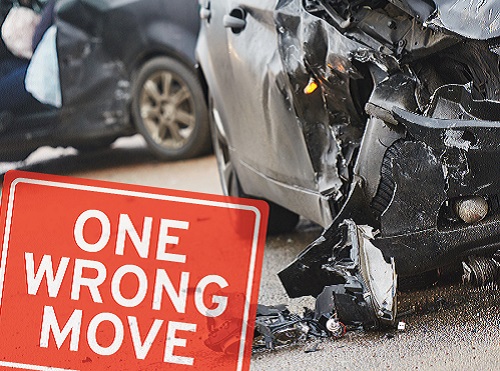Governor Ned Lamont (D) recently signed into law a measure passed by the state legislature directing the Connecticut Department of Transportation to install wrong-way driving alert systems on at least 120 additional highway exit ramps statewide – ramps identified by Connecticut as at “high-risk” for wrong-way driving incidents.
[Above photo by Connecticut DOT]
The agency has been installing wrong-way driving detection technology on state highway exit ramps over the last three years and continues to expand its use statewide. The technology uses cameras to detect a driver entering a highway from the wrong direction and rapidly flashes bright red light emitting diode or LED lights to notify them that they are driving the wrong way. Future installations will add the ability to notify Connecticut State Police in real time, the agency said.
Additionally, the legislation directs the University of Connecticut to begin testing the use of directional rumble strips that alert drivers through vibration and sound when driving the wrong way, and directs the Connecticut DOT to pilot test the use of variable electronic message signs along the highway to alert motorists of a potential wrong-way driver.
“It is shocking how quickly the number of wrong-way driving incidents has accelerated over these last couple of years, and we need to do more to prevent them,” Gov. Lamont said in a statement. “Reversing this trend requires a comprehensive approach that not only involves infrastructure upgrades using advanced technology, but also requires a heightened awareness by drivers every single time they are entering a highway. This is an issue that we cannot take lightly, and we must continue researching new and emerging methods of preventing wrong-way driving incidents.”
Meanwhile, the Connecticut DOT conducted an analysis of more than 700 highway ramp locations statewide, where on- and off-ramps are located on the same side of the roadway, near establishments that serve alcohol, or lack highway illumination are included in a list of 236 high-risk locations.
“Our team is working hard every day to prevent these crashes from happening. We’re adding more wrong-way detection systems to exit ramps, continuing public education campaigns, and piloting new technology,” noted Connecticut DOT Commissioner Garrett Eucalitto.
“But we are counting on the public to do their part as well,” he added. “Nearly all of these crashes are caused by impaired drivers. We need travelers to always plan for a safe ride home if they plan to drink, and for motorists to drive sober each and every time they get behind the wheel.”
Wrong-way driving crashes in Connecticut tripled in 2022, the agency noted – which includes 13 wrong-way crashes that resulted in 23 deaths, compared to four wrong-way crashes in 2021 and two in 2020. The agency added that, in 2022, more than 80 percent of wrong way drivers were found to be impaired.
Several state departments of transportation across the country have developed and deployed similar wrong-way driver detection systems.
In September 2022, the Kentucky Transportation Cabinet received $5.1 million in federal funds to pilot test a wrong-way driver detection system on select highways statewide.
KYTC said its “Wrong Way Driving and Integrated Safety Technology System” would use “cutting-edge” computing and video processing to implement a pilot program aimed at detecting and deterring wrong-way incidents by alerting the wrong-way driver, other drivers, and emergency responders.
In July 2022, the Oklahoma Department of Transportation began pilot testing a wrong way detection and alert system on six ramps along I-40 in the eastern part of the state. Using thermal cameras, the system identifies when a vehicle enters an exit ramp in the wrong direction and displays flashing lights on already posted Wrong Way signs to increase noticeability.
In January 2019, the Nevada Department of Transportation installed and activated a wrong-way driver detection and alert system on U.S. 395 based on radar and closed circuit cameras that automatically detects vehicles entering a highway in the wrong direction, activating two sets of red flashing wrong-way signs on the ramp.
The Arizona Department of Transportation deployed a first-in-the-nation thermal-camera wrong-way vehicle alert system in the Phoenix area in 2017 – a system that received a national award in 2018. The agency is also enhancing and expanding its wrong-way driver detection system to other highway corridors statewide.
 States
States
Podcast: Flashing LED Lights Can Boost Roadway Safety
December 5, 2025 States
States

